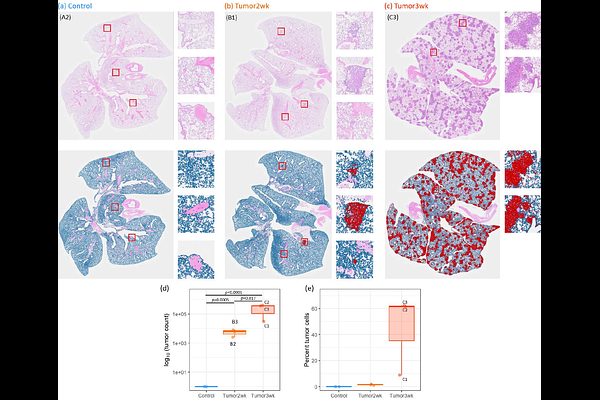Mapping Lung Cancer Ventilation Dynamics: A Pilot Mouse Study Using Functional Imaging and Lung Mechanics

Mapping Lung Cancer Ventilation Dynamics: A Pilot Mouse Study Using Functional Imaging and Lung Mechanics
Smith, R.; Reyne, N.; Batey, D.; Eikelis, N.; Asselin Labat, M.-L.; Donnelley, M.
AbstractIn vivo models that replicate and reproduce human lung cancer and its response to therapy are necessary for the development of new therapeutic strategies and understanding drug resistance. Imaging lung tumors in live animals to monitor tumor growth and response to therapy is challenging due to the location of the lungs and their constant movement during breathing. Additionally, methods such as computed tomography (CT) only provide structural information and not functional information about how well the lungs are working. X-ray velocimetry (XV) is a novel functional lung imaging technique that generates 3D maps of regional lung expansion during breathing. In other lung diseases it has been shown to provide spatial information on where ventilation changes occur. The aim of this pilot study was to use XV and flexiVent lung mechanics assessments to determine the effect of tumor growth on lung function in mice at 2- or 3-weeks post tumor induction, and to evaluate the efficacy of these two tools. Histological analysis showed that tumour growth was not uniform between animals. At 3-weeks post tumor induction, some XV ventilation and flexiVent lung mechanics parameters were significantly different from baseline metrics. In addition, the forced expiratory volume, small-scale ventilation heterogeneity, and the average CT gray value correlated with the tumour counts from the histology. In some mice XV revealed localised regions with altered expansion rates. This pilot study demonstrated that changes in lung function can be identified following tumor induction, and that the model and techniques could be used in the future to determine response to anti-tumor drugs.